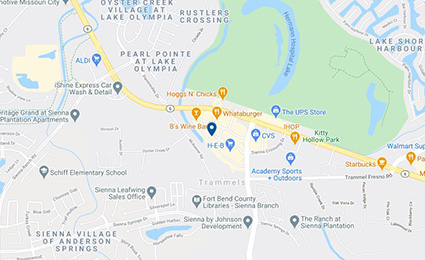Restless Legs Syndrome
What is Restless Legs Syndrome (Willis-Ekbom Disease)?
Restless Legs Syndrome (RLS), also known as Willis-Ekbom disease, is a nervous system disorder that causes severe, uncontrollable urges to move your legs or other limbs. Patients most often experience symptoms while they are lying down and trying to rest for the night. The condition can disrupt sleep, which can have a negative impact on a person’s mood, concentration, and ability to safely perform daily tasks.
UTHealth Neurosciences specialists have expert training in treating Restless Legs Syndrome. Our medical team will develop a personalized care plan for you.
Presenter
Dr. Aparajitha Verma
Neurologist
and Sleep Disorders Specialist
Causes of Restless Legs Syndrome
About 10 percent of Americans have experienced RLS symptoms. Researchers believe that an imbalance of dopamine, a chemical in the brain that sends messages to control muscle movement, may be to blame for RLS. Other scientists have noted low levels of iron in the brains of RLS patients.
RLS can also accompany other underlying conditions, such as renal disease, liver disease, pregnancy or nerve damage. Certain medications may aggravate symptoms, so be sure to tell your doctor about any you are taking. Caffeine and inconsistent sleep habits can also aggravate symptoms.
Signs of Restless Legs Syndrome
The most common signs of Restless Legs Syndrome are an unpleasant feeling or urges to move a part of the body. It might be described as a throbbing, itching, or aching. This is most common in the legs but can also impact the arms and torso. Symptoms seem to worsen when a person can’t move for a long time, such as during a plane or car ride. Movement brings at least temporary relief to the sensations. More than 80 percent of RLS patients also experience periodic limb movement of sleep, which is characterized by involuntary leg movement and twitching during sleep. This movement might disturb the patient’s rest, as well as their sleep partner.
Women sometimes develop RLS in the second half of pregnancy, but the symptoms often disappear after delivery.
Diagnosis
Your doctor will consider your symptoms, their triggers, and any relieving factors. They will likely conduct a neurological and physical exam, as well as a family medical history. Blood tests might be ordered to identify an iron deficiency. A sleep study might be ordered, but are not always necessary for an RLS diagnosis.
Treatment
While there isn’t a cure for RLS, current therapies and medicine can minimize symptoms and provide a higher quality of sleep. Sometimes, stretching, walking, and exercising may be all it takes to reduce RLS symptoms. Avoiding caffeine is also useful. Baths, massages, and warm or cool packs may reduce symptoms. Also, vibrating pads or a pneumatic compression device that pumps air into and out of sleeves worn around your legs could be used to help.
If lifestyle changes don’t work, medications or supplements might be recommended. Some patients may benefit from iron supplements. Others might need anti-seizure drugs, dopamine agonists patches, muscle relaxers and sleep medications.
Sleep Disorders
Contact Us
At UTHealth Neurosciences, we offer patients access to specialized neurological care at clinics across the greater Houston area. To ask us a question, schedule an appointment, or learn more about us, please click below to send us a message. In the event of an emergency, call 911 or go to the nearest Emergency Room.











